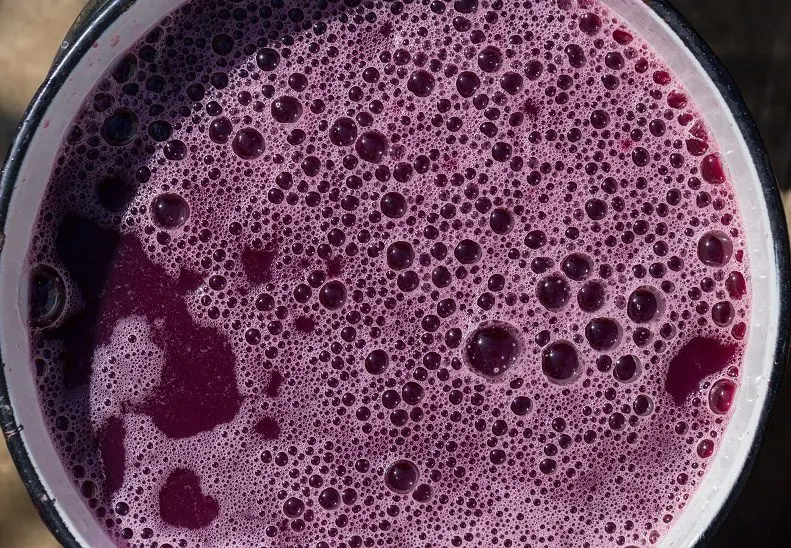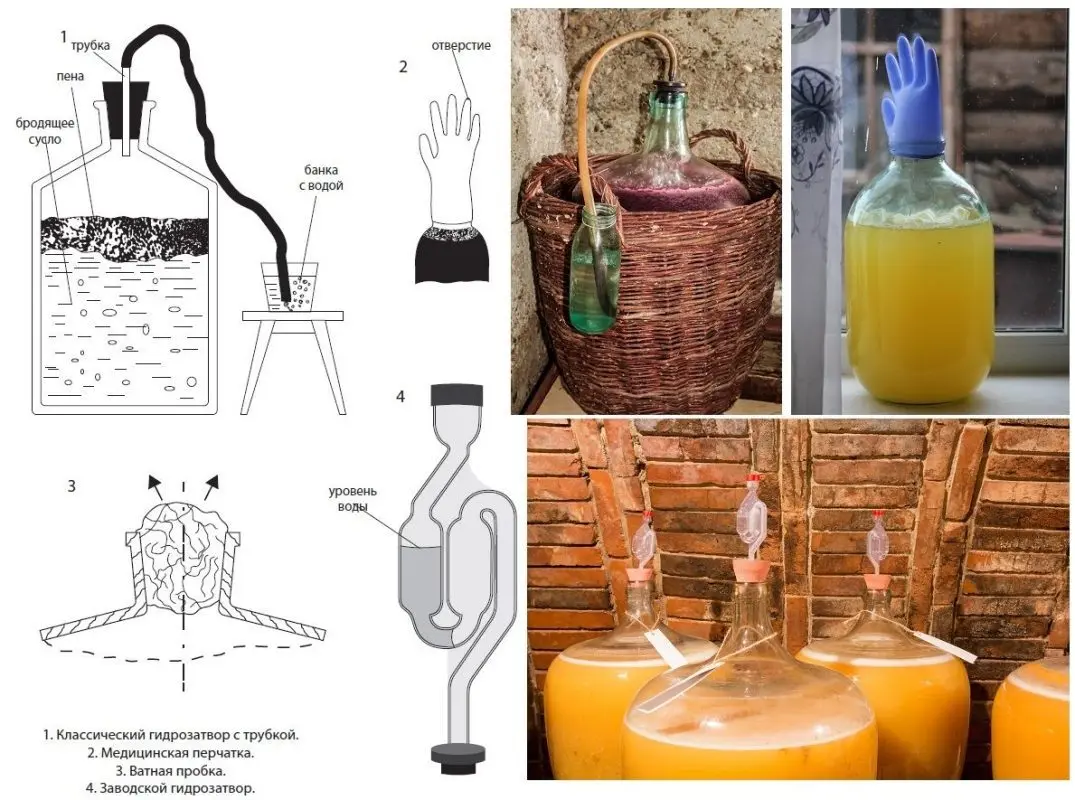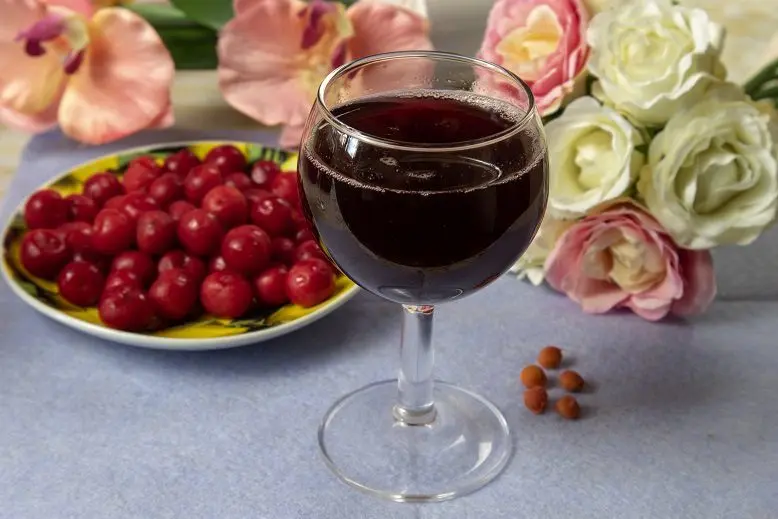Cherry wine with pits is remembered for its light bitterness and characteristic almond flavor. But the bones contain harmful substances: cyanide and hydrocyanic acid. To make a tasty and at the same time safe drink, you need to follow the proposed cooking technology exactly. Proper holding time and an increased proportion of sugar will neutralize harmful substances.
Pitted cherry wine needs sweet and sour berries. First, the raw materials must be carefully sorted out, removing unripe, spoiled or rotten fruits. Even one bad berry can ruin the whole batch. To avoid contamination with pathogenic microorganisms, the containers used should be sterilized with boiling water and wiped dry, and only clean hands should be handled with the wort.
It is advisable not to wash the cherry, so that wild yeast remains on the skin, which will start fermentation. If you still had to wash the dirty berries, then to get a guaranteed result, I advise you to use store-bought wine yeast (in no case dry or pressed bakery yeast) or make homemade sourdough from raisins.
Ingredients:
- cherry berries – 3 kg;
- water – 3 liters;
- sugar – 1 kg.
Pitted cherry wine recipe
1. Knead the berries, peeled from the stalks, without splashing the juice. Each berry must be crushed.
Attention! If the stones are damaged, the finished wine will be too bitter, so mechanical methods of processing cherries are not suitable.
2. Place the resulting mass together with the bones in a container with a wide neck – an enameled or plastic pan (bucket). Due to oxidation by cherry juice, aluminum and other metal containers cannot be used.
3. Add 400 grams of sugar (40% of the total) and all the water. Stir, cover with gauze or a thick cloth to protect against flies, transfer the wort to a dark room at room temperature. Leave for 3-4 days.
After a maximum of a day (usually after 6-12 hours), signs of fermentation should appear: foam on the surface, hissing, a slight smell of sour. From the moment of adding water and sugar, be sure to stir the wort with a clean hand or a wooden stick every 8-12 hours, drowning the pulp in the juice – the surfaced skin of berries and pulp. Without agitation, the wort can turn sour or moldy.

4. Filter the juice through cheesecloth. Press the pulp well. Add back to pure juice about a quarter of the seeds and 200 grams of sugar (20% of the proportion in the recipe). Stir until the sugar is completely dissolved. The remaining pulp is no longer needed.
5. Pour the pitted cherry juice into a fermentation container. Leave at least 25% of the volume free for the remaining sugar, foam and carbon dioxide. Install a water seal of any design on the neck or a medical glove with a hole pierced by a needle in one of the fingers. Transfer the container to a dark room (or cover with a thick cloth) with a stable temperature of 18-25 °C.

6. After 5 days, add the next portion of sugar – 200 grams (20%). To do this, remove the water seal, pour 200 ml of wort through a tube into a separate container (the amount in milliliters is equal to the amount of sugar added in grams), dissolve the sugar. Pour the resulting syrup back into the wort and close the neck with a water seal.
Attention! Before adding sugar, taste the drained wort, if it is too tart or bitter, remove the stones. After fermentation and aging, the taste will improve.
7. After another 6 days, filter the wort through cheesecloth to remove all the bones. Add the remaining sugar – 200 grams (20%), mix, pour back into a well-washed fermentation tank and install a water seal.
Depending on the yeast and temperature, cherry wine ferments for 25-55 days, then the water seal stops releasing gas (the glove deflates), almost all the foam disappears, a layer of sediment is visible at the bottom, and the wine itself becomes lighter. If these signs appear, proceed to the next cooking step.
8. Drain the young wine through a straw, without touching the sediment. To taste. If desired, add more sugar (the amount is up to you) to increase the sweetness. You can also raise the fortress with vodka or pure ethyl alcohol (3-15% by volume).
Because pitted cherry wine has an almond flavor, fortifying and sweetening after fermentation improves flavor. But I advise you to first determine the optimal proportions on a small amount of wine, so as not to spoil the entire batch.
9. Fill storage containers with wine (to minimize contact with oxygen, preferably under the neck). Close hermetically. The first 10 days can be kept under a water seal in case the fermentation has not completely stopped.
10. Transfer the wine for aging to a dark, cool room – a cellar, cellar or refrigerator. The recommended temperature is 6-16°C. Leave at least 4-6 (preferably 8-12) months for ripening.
As a sediment 2-4 cm thick appears (at first every 10-15 days, then less often), filter the wine by pouring it through a straw. When the sediment does not appear for more than a month, the drink can be bottled for storage and hermetically sealed. Cooking completed. When stored in a refrigerator or cellar, the shelf life is up to 5 years. Fortress – 10-12% (without additional fixing).










